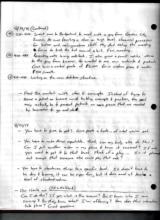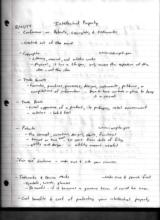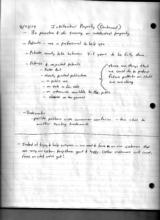Brandon Moore, Wayne Moore, Cheryl Moore, Shannon Moore, and Dave Forbis attended a workshop on intellectual property in Logan, UT. The workshop was put on by the Small Business Development Center, Cooperative Extension of USU. The presenters were a law firm that dealt with patents, trademarks, copyrights, etc. See attached for my notes.
What I got out of the workshop was basic information, timelines, ball park figures, and what is required. My favorite part of the workshop was dealing with how patents, trademarks, and copyrights can be denied and/or rejected.
This might sound random, but I think that our goal is not to secure a patent on every little feature. Our goal is to defend patents being put on to core concepts. We need the model to be open and free. If not, it will swing power potentially in the wrong direction. So, in a nutshell, by us talking about things, publishing things, teaching, instructing, and building with openness in mind, we are helping to keep the patents out of the core of the ideas and concepts. Let people patent smaller pieces of the puzzle, that is no problem. However, we need to protect and educate people on the core of what we are doing.
I have said this in private before, but I would bet that the core concepts that adilas.biz is built on are 100 times more valuable than the code that we have written over the years. There could be thousands of possible code angles on these same concepts. That is well and fine and a known fact. The important piece is protecting the core concepts and principles of what we are doing. We kinda fell into this... this wasn't our original goal. However, I do feel that we have some super important things that we are developing such as:
- 12 Main Application Player Groups - Customers, invoices, quotes, vendors, PO's, items or parts, stock/units, deposits, expense/receipts, employee/users, user-maintained balance sheet items, and elements of time.
- We have photo galleries for each of the 12 main application player groups. Each gallery can hold 100 images per item or individual in the group.
- We also have a full blown content management and digital file catalog and/or archive system for each of the 12 main application player groups. We also go further and allow files and documents to be stored and cataloged at the system level (as a whole), at the group level (by any of the 12 main application player groups), or by individuals within the different groups.
- Another huge piece that we are doing is business world building concepts. This includes all 10 levels that we currently know about. They are: 1. Universe Level (the internet and all adilas pieces), 2. Galaxy Level (linked servers - both data and content servers), 3. Cluster Level (individual boxes, domains, or servers), 4. Solar Systems (databases within a cluster - could be one or more per box), 5. World Level (corporations, entities, and companies within a single solar system or database), 6. Location Level (stores, departments, or physical or virtual sub dividers of a corporation or business), 7. Group Level (see the main 12 application player groups listed above), 8. Individual Level (items, objects, and entities inside of a group. for example: customer 111, invoice 345, deposit 222, po 474, etc.), 9. Data Level (how and where are things stored in the database? what relationships exists? what is the story?, 10. Run all levels over "Time" (time is the current bottom level structure that we play in, on, and through. this same statement could be re-written as objects and data wrapped in time)
- Operation lead accounting over time. Our use of time and how it plays into the whole story of what is going on. It allows for characters, relationships, overcoming trouble or problems, decisions and choices, cause and effect consequences, accountability, etc. That is where you get the whole story or being able to capture the pieces of the story. In short, we call it roll-call accounting. The system is able to go backwards and forwards over time to tell what the relationships were, are, and may be. This helps show how things were/are connected or accounted for over time. It is awesome!
- We have taken a traditional model or business model and created a fully integrated system. You no longer have to have 4-10 different pieces of software to run your business. You can use the full adilas.biz system or platform to run your business. You have access to all of the pieces, any time, under one roof. It works because it is a system.
- We have built the entire foundation on two main concepts. They are: permissions & settings. You can do almost anything with those two pieces. Permissions are who has access and what can they do? Settings are the how, when, how much, how many, and what to call it. This could also include show/hide, open/close, limit, defaults, etc. Settings and permissions may be applied on multiple levels. Technically, a person could add both permissions and settings on all 10 business world building concepts listed above (universe, galaxy, cluster, solar system, world, location, group, individual, data, and wrapped in time). That is a huge piece of the puzzle.
- One last thing that really needs to be there is the ability to be flexible. No two things are the same. People and businesses want access to features, functions, data, and processes from different angles and in different ways. This means that you have to 1. Be able to catch the data. 2. Can you get at the data that you caught? This also includes options for editing or changing the data. 3. Can you show it back to the user in the way that they want it? This goes out to custom levels and deals with interface, API socket connections, webservices, feeds, imports, exports, data trafficking, flow, controls, etc. What are you looking for? What is your goal? This is the results and/or interface of the application.
Anyways, those are some of the pieces that I see that we are doing and developing that could potentially be patented and/or copyrighted. They are listed here to start the process.
|



